- Home
- H. P. Lovecraft
Delphi Complete Works of H. P. Lovecraft (Illustrated) Page 17
Delphi Complete Works of H. P. Lovecraft (Illustrated) Read online
Page 17
Friends said that it was this series of griefs which unhinged the mind of Sir Robert Jermyn, yet it was probably merely a bit of African folklore which caused the disaster. The elderly scholar had been collecting legends of the Onga tribes near the field of his grandfather’s and his own explorations, hoping in some way to account for Sir Wade’s wild tales of a lost city peopled by strange hybrid creatures. A certain consistency in the strange papers of his ancestor suggested that the madman’s imagination might have been stimulated by native myths. On October 19, 1852, the explorer Samuel Seaton called at Jermyn House with a manuscript of notes collected among the Ongas, believing that certain legends of a grey city of white apes ruled by a white god might prove valuable to the ethnologist. In his conversation he probably supplied many additional details; the nature of which will never be known, since a hideous series of tragedies suddenly burst into being. When Sir Robert Jermyn emerged from his library he left behind the strangled corpse of the explorer, and before he could be restrained, had put an end to all three of his children; the two who were never seen, and the son who had run away. Nevil Jermyn died in the successful defence of his own two-year-old son, who had apparently been included in the old man’s madly murderous scheme. Sir Robert himself, after repeated attempts at suicide and a stubborn refusal to utter any articulate sound, died of apoplexy in the second year of his confinement.
Sir Alfred Jermyn was a baronet before his fourth birthday, but his tastes never matched his title. At twenty he had joined a band of music-hall performers, and at thirty-six had deserted his wife and child to travel with an itinerant American circus. His end was very revolting. Among the animals in the exhibition with which he travelled was a huge bull gorilla of lighter colour than the average; a surprisingly tractable beast of much popularity with the performers. With this gorilla Alfred Jermyn was singularly fascinated, and on many occasions the two would eye each other for long periods through the intervening bars. Eventually Jermyn asked and obtained permission to train the animal, astonishing audiences and fellow-performers alike with his success. One morning in Chicago, as the gorilla and Alfred Jermyn were rehearsing an exceedingly clever boxing match, the former delivered a blow of more than usual force, hurting both the body and dignity of the amateur trainer. Of what followed, members of “The Greatest Show on Earth” do not like to speak. They did not expect to hear Sir Alfred Jermyn emit a shrill, inhuman scream, or to see him seize his clumsy antagonist with both hands, dash it to the floor of the cage, and bite fiendishly at its hairy throat. The gorilla was off its guard, but not for long, and before anything could be done by the regular trainer the body which had belonged to a baronet was past recognition.
II.
Arthur Jermyn was the son of Sir Alfred Jermyn and a music-hall singer of unknown origin. When the husband and father deserted his family, the mother took the child to Jermyn House; where there was none left to object to her presence. She was not without notions of what a nobleman’s dignity should be, and saw to it that her son received the best education which limited money could provide. The family resources were now sadly slender, and Jermyn House had fallen into woeful disrepair, but young Arthur loved the old edifice and all its contents. He was not like any other Jermyn who had ever lived, for he was a poet and a dreamer. Some of the neighbouring families who had heard tales of old Sir Wade Jermyn’s unseen Portuguese wife declared that her Latin blood must be shewing itself; but most persons merely sneered at his sensitiveness to beauty, attributing it to his music-hall mother, who was socially unrecognised. The poetic delicacy of Arthur Jermyn was the more remarkable because of his uncouth personal appearance. Most of the Jermyns had possessed a subtly odd and repellent cast, but Arthur’s case was very striking. It is hard to say just what he resembled, but his expression, his facial angle, and the length of his arms gave a thrill of repulsion to those who met him for the first time.
It was the mind and character of Arthur Jermyn which atoned for his aspect. Gifted and learned, he took highest honours at Oxford and seemed likely to redeem the intellectual fame of his family. Though of poetic rather than scientific temperament, he planned to continue the work of his forefathers in African ethnology and antiquities, utilising the truly wonderful though strange collection of Sir Wade. With his fanciful mind he thought often of the prehistoric civilisation in which the mad explorer had so implicitly believed, and would weave tale after tale about the silent jungle city mentioned in the latter’s wilder notes and paragraphs. For the nebulous utterances concerning a nameless, unsuspected race of jungle hybrids he had a peculiar feeling of mingled terror and attraction; speculating on the possible basis of such a fancy, and seeking to obtain light among the more recent data gleaned by his great-grandfather and Samuel Seaton amongst the Ongas.
In 1911, after the death of his mother, Sir Arthur Jermyn determined to pursue his investigations to the utmost extent. Selling a portion of his estate to obtain the requisite money, he outfitted an expedition and sailed for the Congo. Arranging with the Belgian authorities for a party of guides, he spent a year in the Onga and Kaliri country, finding data beyond the highest of his expectations. Among the Kaliris was an aged chief called Mwanu, who possessed not only a highly retentive memory, but a singular degree of intelligence and interest in old legends. This ancient confirmed every tale which Jermyn had heard, adding his own account of the stone city and the white apes as it had been told to him.
According to Mwanu, the grey city and the hybrid creatures were no more, having been annihilated by the warlike N’bangus many years ago. This tribe, after destroying most of the edifices and killing the live beings, had carried off the stuffed goddess which had been the object of their quest; the white ape-goddess which the strange beings worshipped, and which was held by Congo tradition to be the form of one who had reigned as a princess among those beings. Just what the white ape-like creatures could have been, Mwanu had no idea, but he thought they were the builders of the ruined city. Jermyn could form no conjecture, but by close questioning obtained a very picturesque legend of the stuffed goddess.
The ape-princess, it was said, became the consort of a great white god who had come out of the West. For a long time they had reigned over the city together, but when they had a son all three went away. Later the god and the princess had returned, and upon the death of the princess her divine husband had mummified the body and enshrined it in a vast house of stone, where it was worshipped. Then he had departed alone. The legend here seemed to present three variants. According to one story nothing further happened save that the stuffed goddess became a symbol of supremacy for whatever tribe might possess it. It was for this reason that the N’bangus carried it off. A second story told of the god’s return and death at the feet of his enshrined wife. A third told of the return of the son, grown to manhood — or apehood or godhood, as the case might be — yet unconscious of his identity. Surely the imaginative blacks had made the most of whatever events might lie behind the extravagant legendry.
Of the reality of the jungle city described by old Sir Wade, Arthur Jermyn had no further doubt; and was hardly astonished when early in 1912 he came upon what was left of it. Its size must have been exaggerated, yet the stones lying about proved that it was no mere negro village. Unfortunately no carvings could be found, and the small size of the expedition prevented operations toward clearing the one visible passageway that seemed to lead down into the system of vaults which Sir Wade had mentioned. The white apes and the stuffed goddess were discussed with all the native chiefs of the region, but it remained for a European to improve on the data offered by old Mwanu. M. Verhaeren, Belgian agent at a trading-post on the Congo, believed that he could not only locate but obtain the stuffed goddess, of which he had vaguely heard; since the once mighty N’bangus were now the submissive servants of King Albert’s government, and with but little persuasion could be induced to part with the gruesome deity they had carried off. When Jermyn sailed for England, therefore, it was with the exultant probabi
lity that he would within a few months receive a priceless ethnological relic confirming the wildest of his great-great-great-grandfather’s narratives — that is, the wildest which he had ever heard. Countrymen near Jermyn House had perhaps heard wilder tales handed down from ancestors who had listened to Sir Wade around the tables of the Knight’s Head.
Arthur Jermyn waited very patiently for the expected box from M. Verhaeren, meanwhile studying with increased diligence the manuscripts left by his mad ancestor. He began to feel closely akin to Sir Wade, and to seek relics of the latter’s personal life in England as well as of his African exploits. Oral accounts of the mysterious and secluded wife had been numerous, but no tangible relic of her stay at Jermyn House remained. Jermyn wondered what circumstance had prompted or permitted such an effacement, and decided that the husband’s insanity was the prime cause. His great-great-great-grandmother, he recalled, was said to have been the daughter of a Portuguese trader in Africa. No doubt her practical heritage and superficial knowledge of the Dark Continent had caused her to flout Sir Wade’s talk of the interior, a thing which such a man would not be likely to forgive. She had died in Africa, perhaps dragged thither by a husband determined to prove what he had told. But as Jermyn indulged in these reflections he could not but smile at their futility, a century and a half after the death of both of his strange progenitors.
In June, 1913, a letter arrived from M. Verhaeren, telling of the finding of the stuffed goddess. It was, the Belgian averred, a most extraordinary object; an object quite beyond the power of a layman to classify. Whether it was human or simian only a scientist could determine, and the process of determination would be greatly hampered by its imperfect condition. Time and the Congo climate are not kind to mummies; especially when their preparation is as amateurish as seemed to be the case here. Around the creature’s neck had been found a golden chain bearing an empty locket on which were armorial designs; no doubt some hapless traveller’s keepsake, taken by the N’bangus and hung upon the goddess as a charm. In commenting on the contour of the mummy’s face, M. Verhaeren suggested a whimsical comparison; or rather, expressed a humorous wonder just how it would strike his correspondent, but was too much interested scientifically to waste many words in levity. The stuffed goddess, he wrote, would arrive duly packed about a month after receipt of the letter.
The boxed object was delivered at Jermyn House on the afternoon of August 3, 1913, being conveyed immediately to the large chamber which housed the collection of African specimens as arranged by Sir Robert and Arthur. What ensued can best be gathered from the tales of servants and from things and papers later examined. Of the various tales that of aged Soames, the family butler, is most ample and coherent. According to this trustworthy man, Sir Arthur Jermyn dismissed everyone from the room before opening the box, though the instant sound of hammer and chisel shewed that he did not delay the operation. Nothing was heard for some time; just how long Soames cannot exactly estimate; but it was certainly less than a quarter of an hour later that the horrible scream, undoubtedly in Jermyn’s voice, was heard. Immediately afterward Jermyn emerged from the room, rushing frantically toward the front of the house as if pursued by some hideous enemy. The expression on his face, a face ghastly enough in repose, was beyond description. When near the front door he seemed to think of something, and turned back in his flight, finally disappearing down the stairs to the cellar. The servants were utterly dumbfounded, and watched at the head of the stairs, but their master did not return. A smell of oil was all that came up from the regions below. After dark a rattling was heard at the door leading from the cellar into the courtyard; and a stable-boy saw Arthur Jermyn, glistening from head to foot with oil and redolent of that fluid, steal furtively out and vanish on the black moor surrounding the house. Then, in an exaltation of supreme horror, everyone saw the end. A spark appeared on the moor, a flame arose, and a pillar of human fire reached to the heavens. The house of Jermyn no longer existed.
The reason why Arthur Jermyn’s charred fragments were not collected and buried lies in what was found afterward, principally the thing in the box. The stuffed goddess was a nauseous sight, withered and eaten away, but it was clearly a mummified white ape of some unknown species, less hairy than any recorded variety, and infinitely nearer mankind — quite shockingly so. Detailed description would be rather unpleasant, but two salient particulars must be told, for they fit in revoltingly with certain notes of Sir Wade Jermyn’s African expeditions and with the Congolese legends of the white god and the ape-princess. The two particulars in question are these: the arms on the golden locket about the creature’s neck were the Jermyn arms, and the jocose suggestion of M. Verhaeren about a certain resemblance as connected with the shrivelled face applied with vivid, ghastly, and unnatural horror to none other than the sensitive Arthur Jermyn, great-great-great-grandson of Sir Wade Jermyn and an unknown wife. Members of the Royal Anthropological Institute burned the thing and threw the locket into a well, and some of them do not admit that Arthur Jermyn ever existed.
The Street
There be those who say that things and places have souls, and there be those who say they have not; I dare not say, myself, but I will tell of The Street.
Men of strength and honour fashioned that Street; good, valiant men of our blood who had come from the Blessed Isles across the sea. At first it was but a path trodden by bearers of water from the woodland spring to the cluster of houses by the beach. Then, as more men came to the growing cluster of houses and looked about for places to dwell, they built cabins along the north side; cabins of stout oaken logs with masonry on the side toward the forest, for many Indians lurked there with fire-arrows. And in a few years more, men built cabins on the south side of The Street.
Up and down The Street walked grave men in conical hats, who most of the time carried muskets or fowling pieces. And there were also their bonneted wives and sober children. In the evening these men with their wives and children would sit about gigantic hearths and read and speak. Very simple were the things of which they read and spoke, yet things which gave them courage and goodness and helped them by day to subdue the forest and till the fields. And the children would listen, and learn of the laws and deeds of old, and of that dear England which they had never seen, or could not remember.
There was war, and thereafter no more Indians troubled The Street. The men, busy with labour, waxed prosperous and as happy as they knew how to be. And the children grew up comfortably, and more families came from the Mother Land to dwell on The Street. And the children’s children, and the newcomers’ children, grew up. The town was now a city, and one by one the cabins gave place to houses; simple, beautiful houses of brick and wood, with stone steps and iron railings and fanlights over the doors. No flimsy creations were these houses, for they were made to serve many a generation. Within there were carven mantels and graceful stairs, and sensible, pleasing furniture, china, and silver, brought from the Mother Land.
So The Street drank in the dreams of a young people, and rejoiced as its dwellers became more graceful and happy. Where once had been only strength and honour, taste and learning now abode as well. Books and paintings and music came to the houses, and the young men went to the university which rose above the plain to the north. In the place of conical hats and muskets there were three-cornered hats and small-swords, and lace and snowy periwigs. And there were cobblestones over which clattered many a blooded horse and rumbled many a gilded coach; and brick sidewalks with horse blocks and hitching-posts.
There were in that Street many trees; elms and oaks and maples of dignity; so that in the summer the scene was all soft verdure and twittering bird-song. And behind the houses were walled rose-gardens with hedged paths and sundials, where at evening the moon and stars would shine bewitchingly while fragrant blossoms glistened with dew.
So The Street dreamed on, past wars, calamities, and changes. Once most of the young men went away, and some never came back. That was when they furled the Old Flag an
d put up a new Banner of Stripes and Stars. But though men talked of great changes, The Street felt them not; for its folk were still the same, speaking of the old familiar things in the old familiar accents. And the trees still sheltered singing birds, and at evening the moon and stars looked down upon dewy blossoms in the walled rose-gardens.
In time there were no more swords, three-cornered hats, or periwigs in The Street. How strange seemed the denizens with their walking-sticks, tall beavers, and cropped heads! New sounds came from the distance — first strange puffings and shrieks from the river a mile away, and then, many years later, strange puffings and shrieks and rumblings from other directions. The air was not quite so pure as before, but the spirit of the place had not changed. The blood and soul of the people were as the blood and soul of their ancestors who had fashioned The Street. Nor did the spirit change when they tore open the earth to lay down strange pipes, or when they set up tall posts bearing weird wires. There was so much ancient lore in that Street, that the past could not easily be forgotten.
Then came days of evil, when many who had known The Street of old knew it no more; and many knew it, who had not known it before. And those who came were never as those who went away; for their accents were coarse and strident, and their mien and faces unpleasing. Their thoughts, too, fought with the wise, just spirit of The Street, so that The street pined silently as its houses fell into decay, and its trees died one by one, and its rose-gardens grew rank with weeds and waste. But it felt a stir of pride one day when again marched forth young men, some of whom never came back. These young men were clad in blue.

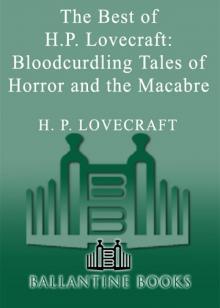 The Best of H.P. Lovecraft
The Best of H.P. Lovecraft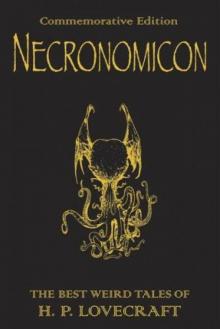 The Definitive H.P. Lovecraft: 67 Tales Of Horror In One Volume
The Definitive H.P. Lovecraft: 67 Tales Of Horror In One Volume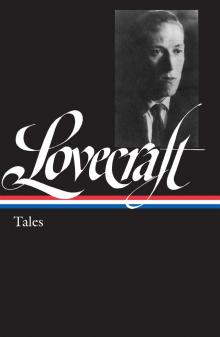 The Complete Works of H.P. Lovecraft
The Complete Works of H.P. Lovecraft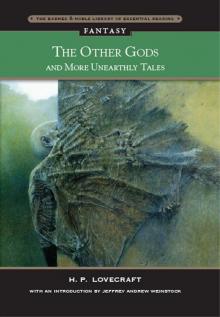 Other Gods and More Unearthly Tales
Other Gods and More Unearthly Tales Lovecraft's Fiction Volume I, 1905-1925
Lovecraft's Fiction Volume I, 1905-1925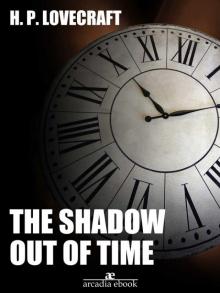 The Shadow Out of Time
The Shadow Out of Time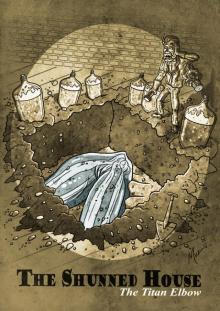 The Shunned House
The Shunned House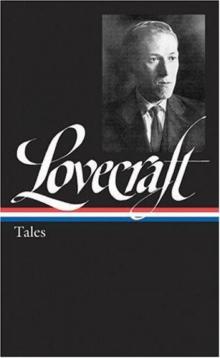 Lovecraft's Fiction Volume II, 1926-1928
Lovecraft's Fiction Volume II, 1926-1928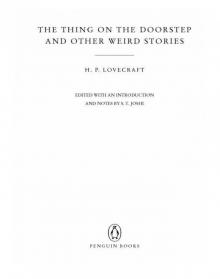 The Thing on the Doorstep and Other Weird Stories
The Thing on the Doorstep and Other Weird Stories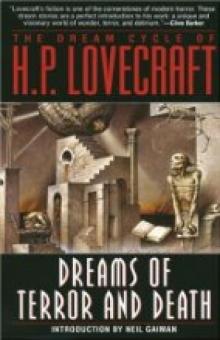 Dream Cycle of H. P. Lovecraft: Dreams of Terror and Death
Dream Cycle of H. P. Lovecraft: Dreams of Terror and Death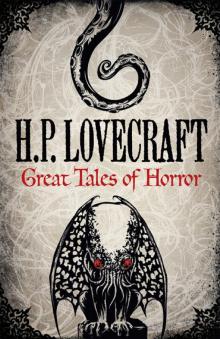 Great Tales of Horror
Great Tales of Horror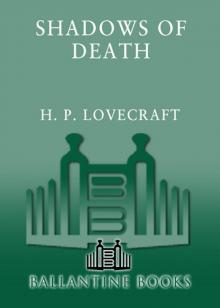 Shadows of Death
Shadows of Death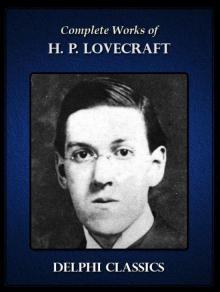 Delphi Complete Works of H. P. Lovecraft (Illustrated)
Delphi Complete Works of H. P. Lovecraft (Illustrated)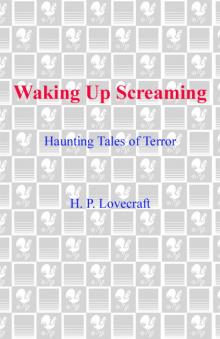 Waking Up Screaming: Haunting Tales of Terror
Waking Up Screaming: Haunting Tales of Terror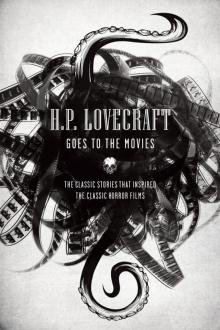 H.P. Lovecraft Goes to the Movies
H.P. Lovecraft Goes to the Movies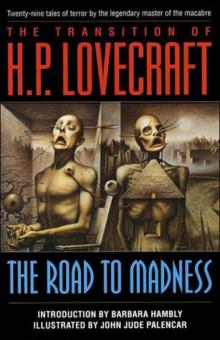 The Road to Madness
The Road to Madness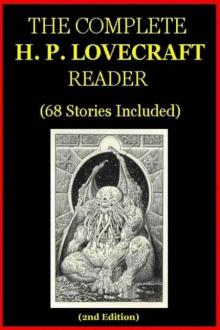 The Complete H.P. Lovecraft Reader (68 Stories)
The Complete H.P. Lovecraft Reader (68 Stories)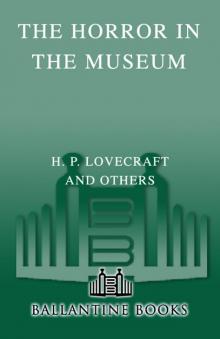 The Horror in the Museum
The Horror in the Museum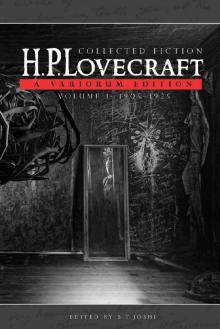 Collected Fiction Volume 1 (1905-1925): A Variorum Edition
Collected Fiction Volume 1 (1905-1925): A Variorum Edition Lovecrafts_Fiction, vol.I_1905-1925
Lovecrafts_Fiction, vol.I_1905-1925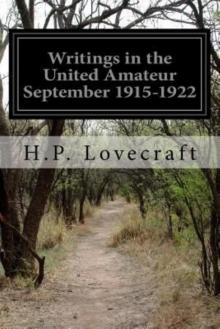 Writings in the United Amateur, 1915-1922
Writings in the United Amateur, 1915-1922 H.P. Lovecraft: The Complete Works
H.P. Lovecraft: The Complete Works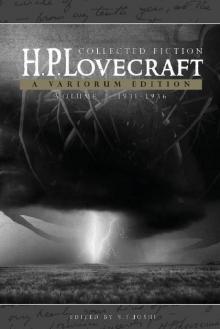 Collected Fiction Volume 3 (1931-1936): A Variorum Edition
Collected Fiction Volume 3 (1931-1936): A Variorum Edition H.P. Lovecraft: The Complete Fiction
H.P. Lovecraft: The Complete Fiction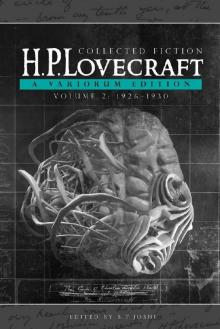 Collected Fiction Volume 2 (1926-1930): A Variorum Edition
Collected Fiction Volume 2 (1926-1930): A Variorum Edition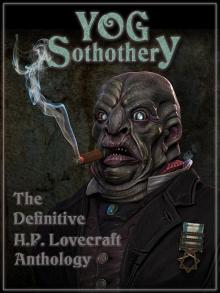 Yog Sothothery - The Definitive H.P. Lovecraft Anthology
Yog Sothothery - The Definitive H.P. Lovecraft Anthology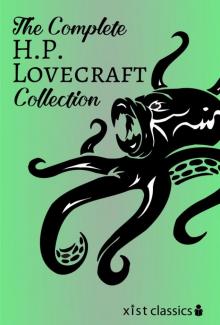 The Complete H.P. Lovecraft Collection (Xist Classics)
The Complete H.P. Lovecraft Collection (Xist Classics)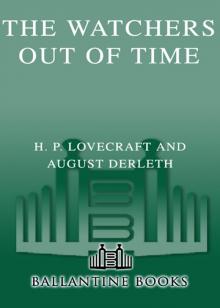 The Watchers Out of Time
The Watchers Out of Time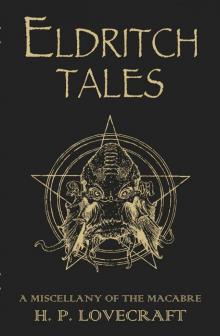 Eldritch Tales
Eldritch Tales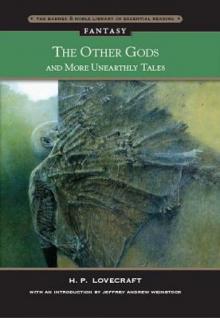 The Other Gods And More Unearthly Tales
The Other Gods And More Unearthly Tales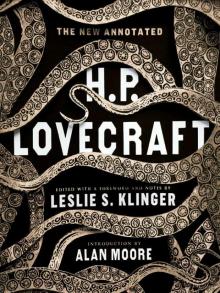 The New Annotated H. P. Lovecraft
The New Annotated H. P. Lovecraft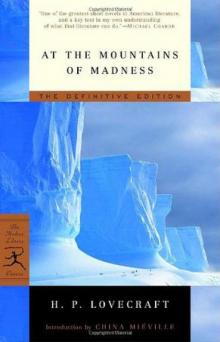 At the mountains of madness
At the mountains of madness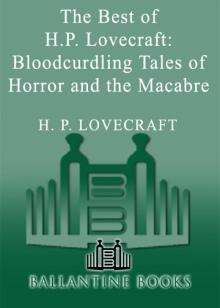 Bloodcurdling Tales of Horror and the Macabre
Bloodcurdling Tales of Horror and the Macabre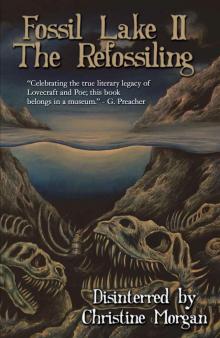 Fossil Lake II: The Refossiling
Fossil Lake II: The Refossiling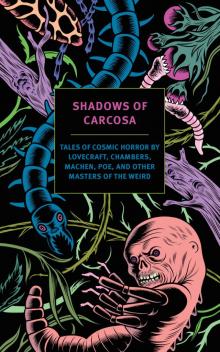 Shadows of Carcosa: Tales of Cosmic Horror by Lovecraft, Chambers, Machen, Poe, and Other Masters of the Weird
Shadows of Carcosa: Tales of Cosmic Horror by Lovecraft, Chambers, Machen, Poe, and Other Masters of the Weird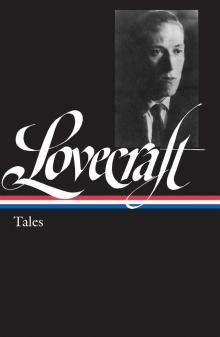 H. P. Lovecraft
H. P. Lovecraft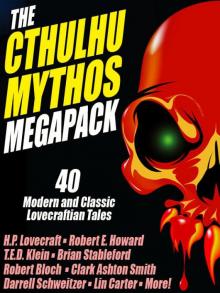 The Cthulhu Mythos Megapack
The Cthulhu Mythos Megapack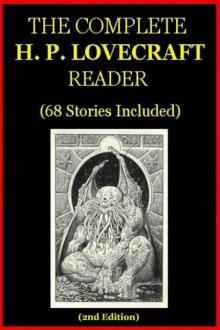 The Complete H. P. Lovecraft Reader (2nd Edition)
The Complete H. P. Lovecraft Reader (2nd Edition) The Complete Fiction
The Complete Fiction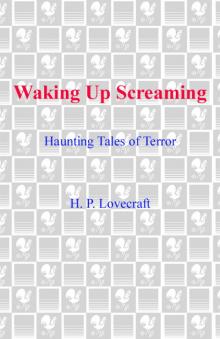 Waking Up Screaming
Waking Up Screaming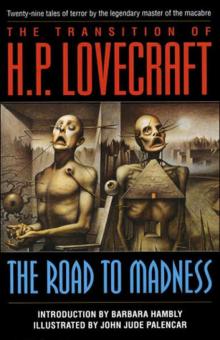 Transition of H. P. Lovecraft
Transition of H. P. Lovecraft![[1935] The Shadow Out of Time Read online](http://i1.bookreadfree.com/i2/04/12/1935_the_shadow_out_of_time_preview.jpg) [1935] The Shadow Out of Time
[1935] The Shadow Out of Time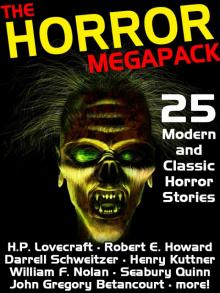 The Horror Megapack
The Horror Megapack